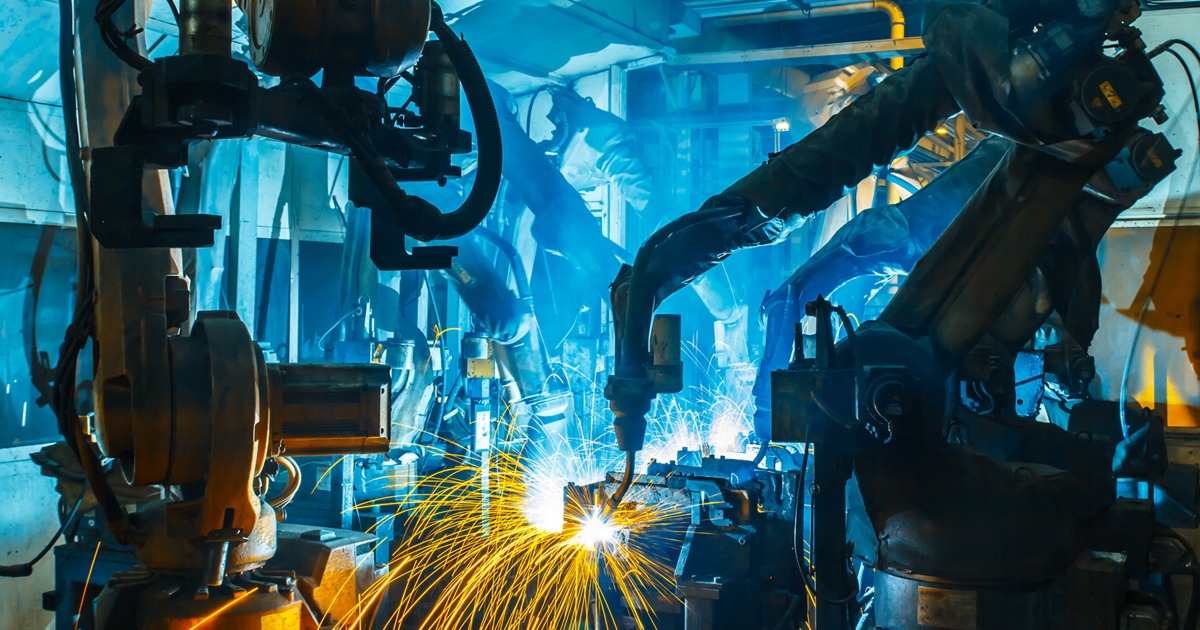V konkurenčnem svetu proizvodnje in gradbeništva je optimizacija postopka varjenja ključnega pomena za doseganje vrhunske učinkovitosti in kakovosti. Varjenje je zapleten postopek, ki vključuje različne dejavnike, od opreme in materialov do spretnosti varilcev. Ta članek obravnava učinkovite strategije in tehnologije za izboljšanje učinkovitosti in kakovosti varilnih postopkov.
Razumevanje procesa varjenja
Preden se lotimo strategij optimizacije, je treba razumeti ključne sestavine postopka varjenja:
- Tehnike varjenja: Različne tehnike varjenja, kot so MIG, TIG in palično varjenje, imajo posebne načine uporabe in prednosti. Izbira prave tehnike za določeno nalogo je ključnega pomena.
- Materiali: Vrsta varjenih materialov, kot so jeklo, aluminij ali zlitine visoke trdnosti, pomembno vpliva na postopek varjenja in zahtevane parametre.
- Oprema: Kakovost in stanje varilne opreme imata ključno vlogo pri doseganju doslednih in visokokakovostnih zvarov.
- Spretnost varilcev: Strokovno znanje in izkušnje varilcev so bistvenega pomena za uspeh varilnega postopka.
Strategije za optimizacijo procesov
1. Izbira prave tehnike varjenja: Izbira ustrezne tehnike varjenja za določeno uporabo je prvi korak pri optimizaciji postopka. Vsaka tehnika ima svoje prednosti in omejitve:
- Varjenje MIG: Varjenje MIG je znano po svoji hitrosti in enostavnosti uporabe, zato je idealno za debelejše materiale in visokoprodukcijska okolja.
- Varjenje TIG: Varjenje TIG, ki zagotavlja izjemno natančnost in nadzor, je primerno za tanke materiale in aplikacije, ki zahtevajo visokokakovostne zvare.
- Varjenje s palico: Palično varjenje je vsestransko in učinkovito v zunanjih in neugodnih razmerah ter se pogosto uporablja pri gradbenih in popravilnih delih.
2. Optimizacija varilnih parametrov: Prilagoditev varilnih parametrov, kot so napetost, tok in hitrost premikanja, lahko bistveno vpliva na kakovost in učinkovitost varjenja:
- Napetost in tok: Pravilna nastavitev napetosti in toka zagotavlja ustrezno penetracijo in zmanjšuje napake, kot sta poroznost in razpršenost.
- Hitrost potovanja: Z uravnavanjem hitrosti premikanja lahko dosežete enakomerno število zvarnih kroglic in zmanjšate toplotno prizadete cone (HAZ).
3. Izvajanje napredne varilne opreme: Z naložbo v sodobno varilno opremo z naprednimi funkcijami lahko izboljšate učinkovitost in kakovost:
- Viri energije na osnovi inverterjev: Ti viri energije omogočajo boljši nadzor nad varilnimi parametri in so v primerjavi s tradicionalnimi transformatorji energetsko učinkovitejši.
- Tehnologija pulznega varjenja: Pulzno varjenje omogoča boljši nadzor nad dovajanjem toplote, zmanjšuje popačenja in izboljšuje kakovost zvara, zlasti pri tankih materialih.
4. Redno vzdrževanje in umerjanje: Vzdrževanje in umerjanje varilne opreme je bistvenega pomena za dosledno delovanje:
- Redno vzdrževanje: Redno pregledovanje in servisiranje varilnih strojev preprečuje nepričakovane okvare in zagotavlja optimalno delovanje.
- Kalibracija: Redno umerjanje varilne opreme zagotavlja natančnost nastavitev in parametrov, kar vodi k dosledni kakovosti zvara.
5. Uporaba avtomatizacije varjenja: Avtomatizacija lahko močno izboljša učinkovitost in doslednost postopkov varjenja:
- Robotski varilni sistemi: Ti sistemi lahko natančno opravljajo hitre in ponavljajoče se naloge, kar zmanjšuje število človeških napak in povečuje produktivnost.
- Sodelujoči roboti (Cobots): Coboti delajo skupaj z varilci in opravljajo ponavljajoča se ali naporna opravila, usposobljeni varilci pa se lahko osredotočijo na zapletene zvare.
6. Izboljšanje usposabljanja varilcev in razvoj spretnosti: Vlaganje v programe usposabljanja varilcev zagotavlja, da varilci obvladajo najnovejše tehnike in tehnologije:
- Simulatorji za usposabljanje: Simulatorji varjenja zagotavljajo realistično okolje za usposabljanje brez stroškov in tveganja, ki jih prinaša tradicionalno usposabljanje.
- Nenehno izobraževanje: S stalnim usposabljanjem in programi certificiranja varilce obveščate o napredku v industriji in najboljših praksah.
7. Izvajanje ukrepov za nadzor kakovosti: Nadzor kakovosti je bistvenega pomena za zagotavljanje celovitosti in zanesljivosti zvarov:
- Nedestruktivno testiranje (NDT): Tehnike, kot sta ultrazvočno testiranje in radiografija, preverjajo zvare, ne da bi jih poškodovale, ter tako ugotavljajo napake in zagotavljajo kakovost.
- Spremljanje med procesom: Spremljanje varilnih parametrov in pogojev varjenja v realnem času omogoča takojšnje prilagoditve, ki preprečujejo napake in ohranjajo doslednost.
8. Racionalizacija delovnega toka in proizvodnih procesov: Optimizacija celotnega delovnega procesa in proizvodnih postopkov lahko skrajša izpade in izboljša učinkovitost:
- Načela vitke proizvodnje: Izvajanje načel vitkega poslovanja zmanjšuje količino odpadkov, racionalizira delovanje in povečuje produktivnost.
- Učinkovito oblikovanje postavitve: Načrtovanje učinkovite razporeditve delovnega prostora zmanjšuje premikanje in zamude ter izboljšuje celoten potek varilnega postopka.
Izkoriščanje tehnologije in inovacij
1. Digitalni varilni sistemi: Digitalni varilni sistemi vključujejo napredne nadzorne algoritme in funkcije povezljivosti za optimizacijo postopka varjenja:
- Pametni stroji za varjenje: Ti stroji lahko na podlagi povratnih informacij v realnem času samodejno prilagodijo parametre, kar zagotavlja optimalne nastavitve in izboljša kakovost zvara.
- Analiza podatkov: Zbiranje in analiziranje podatkov o varjenju pomaga prepoznati trende, optimizirati parametre in napovedati potrebe po vzdrževanju.
2. Dodajalna proizvodnja (AM): Dodajalna proizvodnja, znana tudi kot 3D tiskanje, si utira pot v aplikacije varjenja:
- Dodajalna proizvodnja z žičnim lokom (WAAM): Pri tej tehniki se s postopkom varjenja ustvarjajo plasti materiala, kar omogoča izdelavo zapletenih delov po meri z minimalnim številom odpadkov.
3. Razširjena resničnost (AR): Tehnologija AR se uporablja za pomoč varilcem v realnem času:
- Čelade in očala AR: Te naprave zagotavljajo vizualne prekrivke in vodila ter varilcem pomagajo ohranjati natančnost in doslednost, zlasti pri zapletenih zvarih.
Okoljski in varnostni vidiki
1. Odvod dima in prezračevanje: Ustrezno prezračevanje in sistemi za odsesavanje dima so ključnega pomena za ohranjanje varnega delovnega okolja in zagotavljanje zdravja varilcev:
- Napredni odsesovalniki dima: Sodobni sistemi za odsesavanje dima učinkovito zajemajo in filtrirajo škodljive hlape in trdne delce.
- Prezračevalni sistemi: Dobro zasnovani prezračevalni sistemi zagotavljajo ustrezen pretok zraka in odstranjevanje nevarnih snovi z delovnega območja.
2. Ergonomija in zdravje: Ergonomski vidiki in zdravstvene pobude lahko izboljšajo učinkovitost varilcev in zmanjšajo tveganje za poškodbe:
- Ergonomska oprema: Lahka, ergonomska orodja zmanjšujejo telesno obremenitev in utrujenost.
- Zdravstveni programi: Z izvajanjem zdravstvenih programov in zagotavljanjem dostopa do virov dobrega počutja lahko izboljšate splošno dobro počutje delavcev.
Zaključek
Optimizacija postopka varjenja vključuje celovit pristop, ki vključuje izbiro ustreznih tehnik, optimizacijo parametrov, uporabo napredne opreme ter uporabo avtomatizacije in digitalnih tehnologij. Poleg tega so redno vzdrževanje, nadzor kakovosti in usposabljanje varilcev bistveni za ohranjanje visokih standardov učinkovitosti in kakovosti. Z izvajanjem teh strategij lahko proizvajalci izboljšajo produktivnost, zmanjšajo stroške in dosežejo vrhunsko kakovost zvarov ter si tako zagotovijo konkurenčno prednost v panogi.

